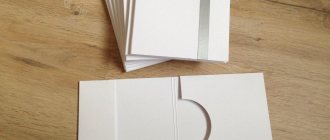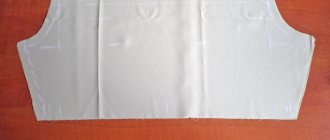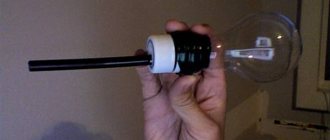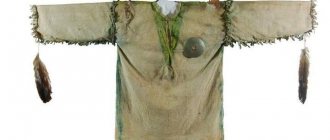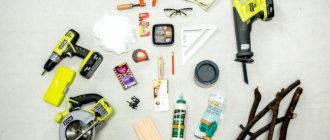—Categories
- PAPER AND EVERYTHING FROM IT. (28)
- Cardboard furniture. (4)
- Weaving from newspapers. (6)
- Photo. (1)
- EVERYTHING FOR THE DIARY. (22)
- Pictures, comments. (6)
- Emoticons. (3)
- Blog tips. (8)
- CROCHET. (94)
- Hats, scarves. (7)
- Dress skirt. (25)
- Various tips. Scheme. (19)
- Bags, string bags. (5)
- Slippers, socks. (5)
- Tops, tunics. (23)
- Shawls, capes, ponchos - stoles. (6)
- COUNTRY THINGS. (48)
- DECORATION. (123)
- Jars-jars. (22)
- Bottled. (45)
- Wall decor. (6)
- Decoupage. (24)
- For inspiration. (10)
- Boxes. all sorts of different things. (20)
- Frames. (3)
- COMPUTER CASES. (5)
- HOME COMFORT WITH YOUR OWN HANDS. (89)
- Kitchen ideas. (8)
- How to decorate your home. (35)
- Rugs, different techniques. (4)
- Note to the owner. (28)
- Clean house. (8)
- You can't buy HEALTH. (72)
- Diets. (eleven)
- For myself, my beloved. (eleven)
- Charger. (10)
- Healthy hair. (9)
- Useful tips. (eleven)
- TOYS. (22)
- Inspired by the little ones. (3)
- Bunnies. (8)
- Kitties. (4)
- Nosuli. (3)
- INTERESTING, BEAUTIFUL. (thirty)
- Female image. (4)
- DOLLS. (64)
- Angels. (14)
- Little dolls. (2)
- Master Class. (15)
- Admire it. (12)
- Primitives. (2)
- Textile dolls. (16)
- Tildochki. (3)
- PUPPET. (eleven)
- Accessories - hats, umbrellas. (2)
- Face, eyes, hairstyle. (4)
- Clothes, shoes, furniture. (5)
- COOKING. (487)
- Pancakes, pancakes, flatbreads, potato pancakes. (26)
- Dishes in a pot. (3)
- Dishes for health. (12)
- Mushroom dishes. (2)
- Meat dishes. (40)
- Poultry dishes. (50)
- Fish dishes. (17)
- Egg dishes. (4)
- Bakery. (28)
- Bakery. (Cookies, waffles.) (11)
- Dessert without baking. (3)
- Dessert. (47)
- Breakfasts. Fast, hot dishes. (12)
- Snacks. (44)
- Canning. (35)
- Candies. (7)
- Dairy and fermented milk products. (12)
- Beverages. (eleven)
- Unsweetened pastries, casseroles. (44)
- Vegetable dishes. (34)
- Lenten dishes. (3)
- Salads. (55)
- Sauces, gravies. (eleven)
- Soups. (18)
- Culinary selections. (26)
- KURNOSIKI (for grandson.) (30)
- USEFUL. (2)
- HOLIDAYS. Crafts and gifts. (61)
- Valentine's Day. (9)
- Ideas. (4)
- New Year. (12)
- Easter. (13)
- Package. Tags (labels). (22)
- NEEDLEWORK. (288)
- Application. (6)
- Bijouterie. (37)
- Beads. (24)
- Wallow. (2)
- Vintage. (9)
- Pincushions. (10)
- Ideas. (10)
- From plastic bottles. (25)
- Patchwork ideas. (10)
- Handicraft master classes. (66)
- Papier mache. (4)
- Alterations, second life of things. (29)
- Wire. (18)
- Salty dough. (7)
- Cold porcelain. (1)
- Flowers. (23)
- Sewing. (33)
- LAUGHTER AND ONLY! (42)
- SOUVENIRS FROM SHELLS. (42)
- Sea pebbles. (13)
- Panel. Collage. Framework. (7)
- Decorations. (4)
- FLORISTICS. (59)
- Compositions, panels. (2)
- Topiary, trees. (44)
- QUOTES. (1)
Preparation of raw materials
In cigarette factories, only pre-prepared material is used to produce cigars. This is the tobacco that will go into the filling and binding and the cover sheet that forms the shape of the product.
The tobacco composition of cigars at home for filling has been prepared for years. The mixture goes through 2-3 fermentation cycles. This gives the characteristic tastes and aromas that distinguish cigars by variety and type. That's why they smoke cigars for a long time.
The preliminary preparation process is meticulous and lengthy and is carried out entirely by hand. The starting leaves are taken out of the bales and inspected. Excess moisture, dust, debris and any other components are removed from the raw materials. Next, the tobacco is aged in oak barrels, which can take 2-3 years.
The cover sheet undergoes one fermentation cycle.
Important: do not remove the central core from the sheet, so as not to “break” the whole sheet. Final processing involves wetting, de-veining and sorting by characteristics.
Interestingly, only women work in branded tobacco factories with wrapper sheets. This is due to the fact that the sheet must have an even shape, a designer texture and be elastic. Rough male hands are unable to cope with such a task.
How to make a homemade cigarette from tea
The first thing you need to do is choose a base for home-rolled cigarettes. Dry tea leaves can be diversified with additional herbs: coltsfoot, chamomile, linden, calendula, jasmine or raspberry. By the way, to create tea cigarettes it is better to use not ordinary black tea, but the green variety.
To improve the taste of tea and herbs, you can add some spices; cloves, hops or thyme. The selected mixture must be thoroughly dried and crushed. So what do we do next:
- We select suitable paper. It should be very thin and natural. The best choice would be tissue paper.
- Spread the dry herbal mixture in an even layer on a baking sheet and moisten it evenly. A spray bottle can be used for these purposes.
- Leave the tray with moistened grass in the air for 2-3 hours.
- We cut the tissue paper into equal strips of paper suitable for rolling cigarettes.
- Spread the herbal tea mass in a thin layer on a piece of paper and carefully roll it into a strong tube. Be sure to leave a thin section of paper free.
- We moisten the remaining area and seal it.
After 3-4 minutes, our rolled tea is ready for use. It can be placed in a mouthpiece or used as a reusable filter when smoking. When making tea cigarettes, you can safely experiment with the composition and type of tea. Such cigarettes are not so dangerous and detrimental to health, since they do not contain nicotine.
But do not forget that when paper smolders, it also releases a number of dangerous compounds. Therefore, think about whether it is worth trying to engage in risky experiments? Maybe it’s easier to quit smoking altogether than to smoke an incomprehensible exotic?
As you know, the era of tobacco smoking in Europe coincided with the discovery of America by Christopher Columbus. The Indians, among other gifts, presented the Europeans with a bunch of dried tobacco leaves. However, Columbus, unable to obtain a clear explanation of the purpose of this plant, threw the gift into the sea. Over time, observing the traditions and habits of the Indians, the Spanish conquistadors learned to fill pipes and smoke.
We suggest you read: What is more harmful to smoke: vaping or regular cigarettes
But this time there were some incidents. The Spanish Inquisition, having noticed a man emitting smoke from his nostrils and mouth, ruled that he was undoubtedly possessed by the devil and sentenced him to prison, which ended only after it became clear that the devil had nothing to do with smoking.
The Church, both Catholic and Orthodox, in principle had a negative attitude and still has a negative attitude towards smoking, classifying it as a sin. But this did not stop even believing smokers.
One way or another, tobacco spread in Europe. Doctors of that time decided that tobacco was a good remedy for toothache and dysentery, and prescribed it as a medicine. In the 17th century, wealthy people enjoyed smoking cigars, cigarettes and filling pipes; Snuff is spreading. In the second half of the 19th century, cigarettes began to be produced on an industrial scale.
Classification of tobacco leaves
The composition of the cigar is formed by three types of tobacco leaves:
- Fortaleza 1. The first type is a low strength leaf. This is a natural material with ideal flammability, which requires minimal preliminary preparation. These products smoke quickly and easily.
- Fortaleza 2. This variety has a medium strength. The difference from the first type is its bright aromatics. These options provide better flavor and last longer.
- Fortaleza 3. The third type practically does not burn, but this is what shapes the design of the cigar and provides the bright aroma and character of the tobacco. This is the most delicious part with an expressive aroma.
The first three leaves are intended solely to form the filling of the cigar, the internal component. A sheet called capote is used to shape and bind the rest. It is this leaf that completes the cigar, gives it its final shape and holds the remaining components together.
The cover sheet is called "sara". This is the next, fifth, and final element of the product’s appearance. This material does not impart any practical properties to the product. The difference is that these are designer “clothes” that have a purely aesthetic function.
DIY cigarettes
In times of any difficulties, bad habits always come to the fore, since it is during this period that a person seeks to throw off the burden of accumulated problems, and smoking or drinking alcohol is the simplest solution. Financial difficulties force smokers to look for fundamentally different methods of satisfying their addiction.
A unique way out of this situation is to make your own smoking devices. A similar factor is far from the only one that pushes people to use homemade cigarettes. There is also a certain category of smokers who prefer such products to any store-bought products. All these factors lead to the need to make your own cigarette.
Creating analogues of cigarettes with your own hands is a kind of art that requires a certain skill in such a matter and knowledge of all its intricacies. As a rule, people who try to make smoking devices on their own for the first time get results that are far from ideal. Such products may not ignite easily or may not burn at all, making them impossible to use.
A similar method of smoking is more dangerous due to the fact that the body has a strong impact due to the high toxicity of tobacco leaves. Industrial analogues use a diluted tobacco mixture that has a lower content of nicotine and various tars. Therefore, making cigarettes yourself is an extreme measure that can cause serious harm to health.
What is a twisting shop and how to organize a workplace?
When making a homemade cigar, it is important not only the quality of the tobacco, but also a well-prepared workplace. In factories this is the so-called twisting shop.
The workplace consists of a wooden board, which is made like a kind of desk or workbench; employees work while sitting. The main tool is a flat knife with a semicircular end, a small round knife, and a guillotine for quickly and conveniently cutting sheets and finished cigars.
Nearby there is a special pattern and a vessel with vegetable glue. The substance is prepared in advance and involves a long cooking process. Cigars use exclusively natural binder mixtures, which, thanks to multi-level processing, ensure that the sheets are fixed in shape and add additional flavor.
In factories, twisters (or rather, spinners) are divided into categories. The craftsmen know what cigars are and before going to work they read real books about cigars. Large and thick products are trusted only by professionals with many years of experience. Moreover, beginners have to spend years as apprentices: they are taught twisting both in factories and in special technical institutions.
The twisting procedure is divided into stages:
- A DIY cigar will be stronger if you use two or three sheets of the bunch. To do this, the sheets are placed on a board, the main thing is that the lower part with the veins is inside the future cigar.
- Next, the leaves are folded for filling in the cigars.
The materials are folded into an accordion or stack. The master’s task is to make sure that the strong leaves are at the end of the cigar, and the weak leaves are at the beginning, which is lit. Thanks to this, the strength increases during smoking. - The next stage is to roll the filling into a bundle and place it in an approximate shape. After this, the structure is cut and placed in a special wooden press. There the tobacco roll lies for 30-60 minutes. This forms the clear structure and contours of the cigar.
- While the product is being prepared, the craftsman trims the cover. The cover sheet is cut along the edges with a knife.
- After this, the compressed bundle of tobacco is carefully wrapped in a cover sheet. Professionals ensure that the tension throughout the cigarette is uniform, which guarantees the integrity of the product when smoking.
- At the same stage, the head of the product is cut out, which wraps the lower end. The cap is made from the remains of the cover sheet.
- The final procedure for creating a cigar with your own hands is cutting with a guillotine and sealing the holes. If everything is done correctly and the guillotine is sharpened well, the cigar will cut straight. Then all that remains is to place the made cigars in branded packaging, make holes, patterns and other decorations.
Useful tips
As practice shows, rolling a cigarette using a “fresh” newspaper is much easier. Old paper usually contains layers of dirt and dust. In this case, the traction will not be the easiest. In addition, the taste of a homemade cigarette will significantly deteriorate. To experience a pleasant smell, it is better to use a smoking mixture of intense aromatization or give preference to the strongest samples of tobacco.
If you are unable to make a rolled-up newspaper paper into one piece due to poor quality joining of the edges of the paper, there is no need to be upset. It is enough to pour the tobacco mixture back out of the cartridge case and repeat the procedure again. Such a difficult task requires a certain skill. After a few tries everything will definitely work out.
It's not easy to stretch a rolled-up cigarette from a newspaper. The process can be simplified by creating a unique mouthpiece. To do this, you need to leave the end of the homemade cigarette free of tobacco and perform a small twist. The result will be the production of a product that is externally similar to the Soviet Belomor cigarette. It will be much more convenient to smoke such a rolled-up cigarette.
What are the difficulties?
An experienced craftsman at the factory knows how cigars are made, and makes from 60 to 150 pieces per day. But a professional has at hand a well-prepared workplace and, most importantly, raw materials.
It’s easy to find the appropriate equipment in a specialized online market, where you can also find out how Cuban cigars are made. The situation is different with tobacco leaves. Finding what cigars are made from on the open market is not so easy. Cuba is not a problem: here raw materials grow literally on every corner.
If you can’t twist it the first time, you can use the machine method. Most cigarillos, including budget cigars, are made using this method. Using a special hand-held machine, the product is rolled up in just a few minutes, similar to a rolling paper.
Many people smoke and try to make cigars from paper rather than leaves. This is mistake. Essentially, it turns out to be a giant rolled-up cigarette that is simply unsafe to smoke.
It is difficult to find paper for a large cigarette, and using newspaper or paper from notebooks and notepads is prohibited. The materials contain carcinogens and toxins that are hazardous to health and make the tobacco composition unnatural.
The process of making a homemade cigar is fascinating and interesting and in many ways involves certain author's tricks. However, the search and preparation of raw materials makes this procedure long and unprofitable. Branded products are dried for a long time, kept in special conditions and therefore become exclusive with a unique taste.
Completion
Once again, adjust all the parts of your improvised fighter so that they are connected smoothly. Ready. There is no shame in boasting about such a fighter.
Sometimes, when boredom sets in, a hidden genius awakens in our minds, demanding to create something with our own hands. Then the eye falls on the packaging of cigarettes and the question involuntarily arises - “How to make an airplane from a pack of cigarettes?” By the way, various crafts can be made from empty cigarette packages.
We invite you to read: What is the difference between cigarettes with a button
In this article we will not tell you how to make a robot, since this is an activity for advanced craftsmen. But we decided to help those who are thinking about how to make a fighter plane from a pack of cigarettes with their own hands.
As a child, everyone made airplanes at least once.
It will burn cigarettes from empty packs. This toy has been around for many years, but despite this, it still pleases children and can usefully occupy the free time of adults who want to remember their childhood and again make an airplane from an empty cigarette pack. Making such a craft is very simple - each of you can do it the first time.
Cigarette Components
It is these 2 components that are necessary to create full-fledged cigarettes. All other components that are added to such products to improve their aroma or remove bitterness are auxiliary and may not be taken into account during the manufacturing process of the product.
Tobacco is the main component of a cigarette and determines its taste and aromatic qualities. The times when it was necessary to grow tobacco leaves, dry them and grind them are long gone. Today it can be purchased in specialized stores that can be found in any city.


